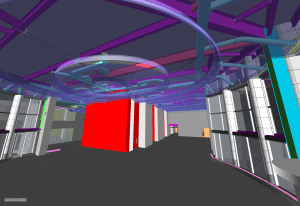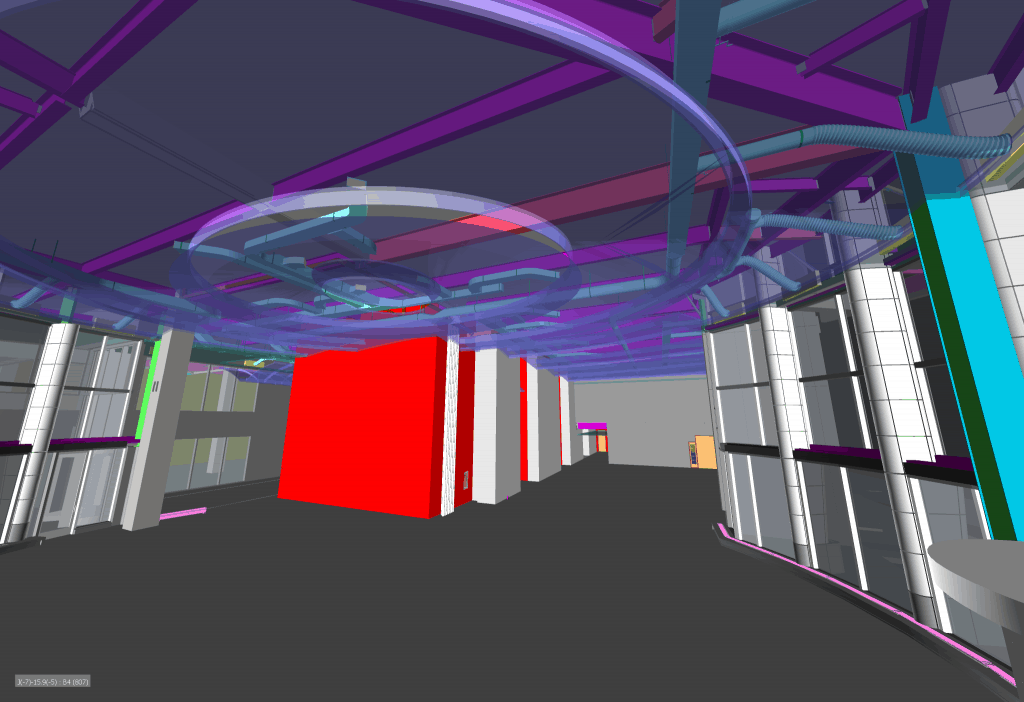
TECHnically Speaking Part 2 | Technology During Construction
This is the second installment of a three-part series where Balfour Beatty-Carolinas explores the innovation that technology brings to the life of a project – before, during, and after construction.
We sat down for a rapid-fire round of Q&A during which we learned what BIM really stands for, how technology is keeping people safe and what it’s like to bridge the gap.
Q: Let’s pretend we didn’t just Google BIM. Will you define it for us?
A: Building Information Technology, or BIM, is the collection of a building’s data, from architectural to structural, and MEP to sustainability.
We are gathering the information from every element of a project, from the visual to the non-visual, and creating an accurate model that we can manipulate.
Q: The non-visual elements of a project being…?
A: That’s going to be facets such as scheduling, equipment information for facilities management, manpower, cost and budget. We can build a model of a project, scrub back and forth in time and see the construction sequence take place right in front of us. If the owner wants to see where their project is going to be in six months, we can advance forward and they can see a visual representation of how the project will look. Often, a schedule is such an eye game. We see bars with start and stopping points, but if there is anything that we know to be true, it’s that people are ultra-visual! We are able to demonstrate exactly what schedule milestones will look like — and any moment in between — helping owners gain a better understanding of the construction plans.
Q: What are some additional ways that we see virtual construction working for our benefit during construction?
A: It’s all about how we can increase value for a project. With virtual mockups, the first and most vital benefit we see is increased safety awareness. Safety and logistics plans are only made more efficient through the additional information that is provided through our coordination — working alongside our operations team we make technology work for the greater good of every individual in and around our jobsite.

Construction productivity is increased through our ability to forecast any potential constructability issues. Through clash detection, we are able to provide fully coordinated fabrication models that include all building systems. If an air duct is going to run into an existing beam, BIM has the ability to detect potential clashes between trades before construction, so that they can be planned for and avoided ahead of time, saving time and money simultaneously. This gives us the time and information we need to create an educated solution.
A few examples of the current processes we do on a daily basis impacting all areas of construction include: as-built collection of existing conditions for renovation projects and progressive project data collection for QA/QC purposes (comparing model components to collected point cloud), as-built models from point clouds and facilities management dashboards to close-out documentation.
It’s a thrill to be a part of a team that is ever vigilant in finding answers.
Q: Would you say “solutions” is the name of the game for the Innovation and Technology team?
A: Absolutely. When it comes down to it, we are here to process the information that we gather and that is provided to us, weave it all together to identify existing or potential issues and then work with project teams to solve those problems. While many projects share commonalities, every project I’ve ever worked on has delivered a new challenge. It’s a thrill to be a part of a team that is ever vigilant in finding answers. I walk away from every project with lessons-learned and am constantly progressing further into my potential.
Q: What about the use of BIM coordination inspires you?
A: The Innovation and Technology team gets to be involved with so many different areas of a project. I get to wear a multitude of hats, and I’m constantly in a state of collaboration with other teammates across Balfour Beatty Construction. Often, you have a design team who is motivated by design and cost, and an operations team who is concerned with the reality of building the project. I get to be a part of bridging the gap that may exist between those two worlds — truly, making the dream a reality. With my background in architecture, I can put myself in the shoes of a designer who wants to see their vision realized and also work from an operations standpoint to generate solutions that align with that vision.
Q: What do owners want from our Innovation and Technology team?
A: At the end of the day, owners want less expensive, quicker options. With our coordination efforts, we work as advocates for their dream and aid our teams in delivering success.
This article was first published in Building with Purpose-Carolinas, a newsletter and blog published by Balfour Beatty Construction’s corporate communications team. Balfour Beatty U.S. has three offices in the Carolinas — Charlotte, Raleigh and Charleston. For more information, visit https://www.balfourbeattyus.com/local-teams/charlotte.






